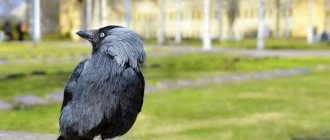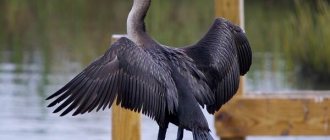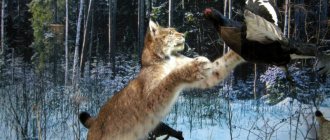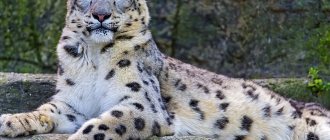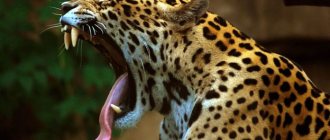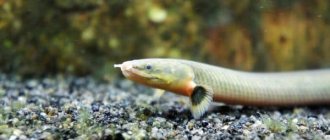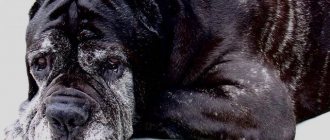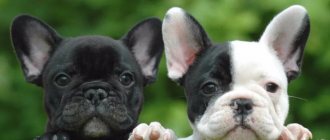16 June42069reptiles or reptilesaspidsblack mambadangerous animalssnakes
Who is the black mamba? Surely everyone has heard this exotic name. The black mamba is the most poisonous snake in Africa from the Aspid family. Also, the black mamba snake is one of the most dangerous animals both in Africa and in the world. In this article you will find a description and photo of the black mamba, and you will also be able to learn a lot of new and interesting things about this poisonous and dangerous snake.
Smile of an asp
It is not evidence of the reptile's violent joy at the sight of the victim, but only reflects an anatomical feature - the characteristic cut of the mouth. The latter, by the way, looks as if the mamba is constantly chewing blueberries, washing them down with ink. The mouth, and not the color of the scales, gave this snake its name. Threatening, the mamba opens its mouth wide, in the outlines of which a person with a developed imagination can easily see the coffin.
The first part of the scientific name Dendroaspis polylepis talks about the love for woody plants, where the snake often rests, the second reminds of its increased scaliness.
This is a slender reptile from the adder family, although more impressive than its close relatives - the narrow-headed and green mambas.
Average parameters of a black mamba: 3 meters in length and 2 kg of mass. Herpetologists believe that in natural conditions, adult snakes demonstrate more impressive sizes - 4.5 meters with 3 kg of weight.
However, the black mamba does not reach the length of the unsurpassed king cobra, but it is ahead of it (like all slates) in the size of its poisonous teeth, growing them to 22-23 mm.
In adolescence, the reptile is light in color - silver or olive. Growing up, the snake darkens, becoming dark olive, gray with a metallic tint, olive green, but never black!
The extraordinary smile of a reptile
All those who have ever seen a Black Mamba live talk about the unusual sweet smile reflected on the snake’s mouth. This is due to the special anatomy - the unique cut of her mouth. She leads a terrestrial lifestyle and, only in very rare cases, for example, to take a sunbath, climbs to higher elevations.
The snake loves semi-arid climates. It often reaches three meters in length and can develop enormous speed in pursuit of prey over short distances.
The Black Mamba received its name not because of its body color, which can be light or dark, but because of its black mouth cavity, which it opens when in danger and hisses ominously. It looks like a black coffin. The upper jaw in the front has teeth about 7 millimeters long. Even such short fangs are enough to bite through the skin of the victim and inject deadly poison into it.
Lifestyle of a black mamba
The laurels of the discoverer of Dendroaspis polylepis belong to the famous herpetologist Albert Günther. He made his discovery in 1864, devoting only 7 lines to the description of the snake. Over the course of a century and a half, mankind’s knowledge of this deadly animal has been significantly enriched.
We now know that the black mamba snake eats lizards, birds, termites, other snakes, as well as small mammals: rodents, hyraxes (similar to guinea pigs), galagos (resembling lemurs), elephant jumpers and bats.
The reptile hunts during the day, attacking from ambush and biting until the prey takes its last breath. Digestion of prey takes a day or more.
Natural enemies can be counted on one hand:
- serpent eagle (krachun);
- mongoose (with partial immunity to poison);
- needle snake (mehelya capensis), which has innate immunity to the toxin.
Black mambas exist alone until it is time to have offspring.
Where does the black mamba snake live and how does the most dangerous snake in Africa live?
The black mamba snake lives in Central, Eastern and Southern Africa, preferring semi-arid areas. The black mamba mainly lives in savannas and woodlands. The black mamba snake rarely climbs trees and bushes, mainly leading a terrestrial lifestyle. This dangerous snake of Africa has a large distribution area. The black mamba is found in northeastern Democratic Republic of Congo, South Sudan, southern Ethiopia, Eritrea, Somalia, Kenya, eastern Uganda, Tanzania, Burundi and Rwanda. In southern Africa, the black mamba snake lives in Mozambique, Swaziland, Malawi, Zambia, Zimbabwe, Botswana, Namibia, southern Angola and KwaZulu-Natal. This is the wide range of one of the most dangerous snakes in Africa.
Compared to other mambas, this one is least adapted for life in trees. Therefore, the poisonous black mamba mainly lives on the ground among shrubby vegetation. To bask in the sun, the black mamba snake can climb a tree or bush, but still prefers to be on the ground most of the time. Sometimes the black mamba lives in hollow trees, abandoned termite mounds and empty burrows.
The black mamba also lives on rocky slopes and in river valleys with fallen trees. The black mamba snake prefers to build long-term nests for living. Africa's most dangerous snake does not live in deserts or dense tropical forests. As a rule, the black mamba snake lives no higher than 1 km above sea level. But in Zambia, the black mamba is found at an altitude of 1.5 km above sea level, and in Kenya up to 1.8 km.
Despite the fact that the black mamba is the most dangerous and poisonous snake in Africa, even it has enemies. The main enemies of the black mamba are some birds of prey that hunt it. First of all, these are black and brown snake eaters; the black mamba snake most often becomes their victim. Another enemy of the black mamba is the needle snake, which has an innate immunity to the venoms of all African snakes. Also dangerous for the black mamba are mongooses, which sometimes hunt it and deftly avoid attacks, and also have acquired immunity from the bite of the black mamba.
Reproduction
In the spring, the partner finds the female by the "aroma" of the discharge, checking her fertility... with a tongue that completely scans her body.
Particularly sexual partners provoke showdowns between males: they intertwine in a close embrace, trying to keep their head above the opponent’s head. The defeated one crawls away in shame.
By mid-summer, a fertilized mamba lays eggs (6-17), from which, after 2.5-3 months, black mambas hatch - from birth “charged” with family poison and able to obtain food.
Most of the cubs die in the first season from predators that hunt them, diseases and human hands.
There is no data on the lifespan of the black mamba in the wild, but it is known that in a terrarium one of the representatives of the species lived up to 11 years.
Key Features
Although all mambas are classified as slates, they have characteristics not found in this family.
Among them are a long narrow head and huge poisonous teeth. Specimens with fangs 23 mm long have been recorded.
The fangs are movable and can be folded. They have ducts for poison inside them.
They are connected to giant glands that occupy a third of the volume of the head. There is so much poison in them that it is enough for several bites in a row.
Its toxicity is very high. The poison has a paralyzing effect that destroys the nervous system.
The legendary Black Mamba, a photo of which is very difficult to take in natural conditions, can even chase a fleeing person.
At the moment of the throw, she stands on her tail and strikes in the head. Despite this, it is possible to avoid the Black Death attack.
To do this you need to follow these simple rules:
- You should never approach this snake. The person is not the object of her hunt; she herself tries to avoid confrontation. She regards the approach as a threat. In this case, she will attack.
- This reptile nests in piles of rotten brushwood and in thickets of bushes. Such places should be avoided.
- When planning a trip to places where the black mamba lives, you need to make sure you have an antidote that you should always carry with you.
The legendary Black Mamba can even chase a fleeing person. At the moment of the throw, she stands on her tail and strikes in the head
The only creatures that can survive the bite of this snake and even kill it are mongooses.
These small animals enter into a fierce battle with a huge reptile and emerge victorious, as they have increased resistance to snake venom.
The black mamba is equally well oriented in space both at night and during the day. Therefore, she hunts at any time of the day. The objects of her hunt are warm-blooded representatives of the animal world: mice, squirrels, birds
Black mamba bite
If you carelessly stand in its path, it will inflict a bite on the move, which may not be noticed at first.
Consider the threatening behavior of the snake (inflating its hood, raising its body and opening its mouth wide) as a gift of fate: in this case, you have a chance to retreat before the fatal throw.
Per bite, a reptile is capable of injecting from 100 to 400 mg of toxin, 10 mg of which (in the absence of serum) is fatal.
But first, the sufferer will go through all the circles of hell with burning pain, swelling of the bite site and local tissue necrosis. Then a strange taste appears in the mouth, abdominal pain, nausea and vomiting, diarrhea, redness of the mucous membranes of the eyes.
The black mamba's venom is oversaturated:
- neurotoxins;
- cardiotoxins;
- dendrotoxins.
Still others are considered the most destructive: they cause paralysis and respiratory arrest. A total loss of control over the body occurs in a short time (from half an hour to several hours).
After a bite, it is necessary to act immediately - the one who is given an antidote and connected to an artificial respiration device has a chance.
But even these patients are not always saved: according to African statistics, 10-15% of those who received the antidote on time die. But if there is no serum at hand, the death of the victim is inevitable.
Bite symptoms
Among the representatives of the Mera animal, poisonous snakes are considered the most insidious. They attack suddenly, and their poison acts very quickly. Accordingly, violent symptoms develop. Interestingly, the black mamba does not try to attack first. If she sees a person, she freezes, wanting to remain unnoticed. When she feels threatened, all she can do is attack.
The reptile especially often bites the face and neck. Then death occurs within 20 minutes. What happens to the body after a toxin enters? Characteristic signs of intoxication include:
- swelling and hyperemia of soft tissues;
- acute local pain;
- vomiting and diarrhea;
- peripheral paralysis;
- loss of consciousness.
Symptoms of a bite develop rapidly. Sometimes the eyes become bloodshot and necrosis occurs. After a bite, irreversible changes occur, and the most dangerous of them is respiratory failure.
Home maintenance
Yes, yes, scary black mambas are bred not only in state zoos: there are eccentrics who keep these snakes in their apartments.
One of the bravest and most experienced terrarium keepers, Arslan Valeev, who systematically posts videos featuring his mambas on YouTube, categorically does not recommend them for home breeding.
According to Valeev, an escaped mamba will immediately rush to find the owner in order to kill him, and you will know about her escape by a lightning bite when entering the room.
The snakekeeper warns that a shift in the asp’s head can happen in one moment, and then the completely tame (as you thought) reptile will pronounce a sentence on you and immediately carry it out.
Arrangement of the terrarium
If these arguments do not convince you, remember what you need to keep black mambas at home.
Firstly, a voluminous terrarium equipped with transparent front doors to observe what is happening inside.
Parameters of a snake housing with a gate valve:
- height not less than 1 meter;
- depth 0.6-0.8 m;
- width is about 2 meters.
Secondly, dense (live or artificial) thickets on snags and branches, which will help snakes adapt to captivity. The branches will also protect overly aggressive or timid individuals from accidental injury.
Thirdly, any loose materials on the bottom: black mambas have a fast metabolism, and newspaper will not suit them.
Reptiles are easily excited by the slightest manipulation in their lair, so you need to clean the terrarium with mambas very quickly and always wear special gloves that can withstand the long snake teeth.
Temperature
In a large terrarium it is not difficult to maintain the desired temperature background - about 26 degrees. The warm corner should heat up to 30 degrees. At night it should not be colder than 24 degrees. It is recommended to use a lamp (as for all land reptiles) of 10% UVB.
Nutrition
Mambas are fed as usual - 3 times a week. This frequency is due to the time of complete digestion, which is 24-36 hours. The diet in captivity is simple: poultry (1-2 times a week) and small rodents.
An overfed mamba will burp, so don't overdo it. And one more reminder: do not feed the snake with tweezers - it moves with lightning speed and does not miss.
Water
Dendroaspis polylepis needs regular spraying. If you are too lazy to do this, put a drinking bowl. Mambas do not drink water very often, using the drinking bowl as a latrine, but water should still be present.
If you don't want to rip off bits of old skin from your reptile's tail, be sure to spray the snake during the molting period.
Reproduction
The mamba reaches sexual maturity at the age of three. Reproduction of Dendroaspis polylepis in captivity is an extraordinary event. So far, only two cases of official breeding of “northern” offspring are known: this happened at the Tropicario Zoo (Helsinki) in the summer of 2010 and in the spring of 2012.
Nutrition and lifestyle
Outside the mating season, black mambas lead a solitary lifestyle. They are considered the fastest snakes on the planet. They are capable of making lightning-fast attacks and chasing prey at a speed of 20 km/h.
Mambas feed on warm-blooded animals:
- rodents;
- small mammals;
- feathered.
They hunt during the day.
Food is digested within 8-10 hours. To recharge energy and digest food, they crawl out into the sun every day to take baths. Despite its abilities, the black mamba, like all snakes, tries to avoid meeting people. Find out which snakes are the most dangerous in Africa.
It attacks only when it senses danger or when it is disturbed or provoked. She may freeze for a while in the hope that the person will not notice her. Often, in search of a home for the “low season,” it crawls into people’s homes, cars, and settles down in courtyards. Also likes to live on reed plantations.
Where can I buy
It is unlikely that you will find a black mamba seller at a bird market or pet store. Terrarium forums and social networks can help you. To avoid getting into trouble, carefully check the dealer (especially if he lives in another city) - ask your friends and make sure that there is a real snake.
It is better if you take the reptile yourself: in this case, you will be able to examine it for possible illnesses and abandon the sick animal.
It’s worse if a snake worth from 1,000 to 10,000 dollars comes to you by parcel on a train. Anything can happen on the road, including the death of a reptile. But who knows, maybe this is how fate will save you from the deadly kiss of the black mamba.
First aid
Since the effect of the toxin develops rapidly, delays in providing medical care can be fatal. After being bitten by a black mamba, you should urgently go to the hospital. It is not always possible to save the victim and avoid death - only those who received the antidote in a timely manner can survive. There is no immunity to poison. Death occurs in 100% of cases after a bite without treatment.
More often than not, injured people die on the way to the hospital. On average, paralysis occurs in 40 minutes, but if the bite site is close to the head or heart area, then death occurs twice as fast.
What should the victim or those around him do? First, you need to make sure that there will be no repeat attack. The victim should be calmed down and placed horizontally. If the poison gets into the limb, then it is placed below the level of the heart. Antihistamines will help with a bite. They do not neutralize the poison, but reduce the likelihood of acute allergies.
What not to do if attacked by a mamba:
- suck out poison from a wound;
- apply ice to the puncture site;
- move or mechanically impact the damaged area;
- use alcohol-containing products for processing;
- cut the wound.
All these manipulations speed up the spread of poison in the victim’s body. If it is not possible to administer the antidote on the spot, a tourniquet is applied to the victim’s limb and taken to the hospital.
Top 14 facts about the black mamba
- The black mamba is the fastest snake in the world. It is capable of reaching speeds of up to 20 km/h if the need arises.
- Other species of mambas live mainly in trees, but not black ones - they prefer to live on the ground.
- Black mambas sometimes use not only empty hollows, but also abandoned termite mounds as nests.
- In Africa, as a result of agricultural expansion, people have invaded the lands where black mambas live, but the snakes are not going anywhere, so attacks on farmers are becoming more common.
- The length of the black mamba can reach three meters. There are rumors about five-meter specimens, but there is no evidence of the existence of mambas of such sizes yet.
- Contrary to their name, black mambas are not black in color. They got their name due to the black coloring of their mouths, which they open wide before attacking.
- In Africa, eight to ten thousand people die every year from the bite of a black mamba.
- Despite the previous point, a mamba rarely attacks a person first. She usually only attacks when disturbed.
- The venom of the black mamba is fatal unless an antidote is administered soon after the bite.
- When hunting, the black mamba first bites the victim, and then crawls to the side and waits for the poison to do its job.
- The black mamba's diet mainly consists of birds, small rodents and lizards.
- During the mating season, male black mambas fight among themselves for the attention of the female, without, however, using their poisonous fangs.
- A newborn black mamba can reach half a meter in length. Moreover, a couple of hours after hatching from the egg, she is already ready to hunt.
- The worst enemies of black mambas are mongooses, which mercilessly exterminate these snakes.
Sources:
https://simple-fauna.ru/reptiles/chernaya-mamba-samaya-yadovitaya-zmeya/
https://stofactov.rf/14-interesting-facts-about-the-black-mamba/
https://zoogalaktika.ru/photos/reptilia/squamata/serpentes/elapidae/dendroaspis-polylepis
CHARACTERISTIC FEATURES OF THE BLACK MAMBA
Threatening pose:
The black mamba is the largest snake of the mamba genus. Before attacking an enemy, she raises the front of her body to a height of about one meter above the ground.
Jaws:
on the top it has only two long poisonous fangs. On the bottom, the two front teeth are greatly enlarged, this helps the mamba retain food.
Body position:
even moving very quickly, the mamba keeps its head above the ground at a height of about 50 cm.
Speed:
traveling long distances, the mamba crawls at a speed of about 11 km/h, and over short distances it reaches speeds of up to 23 km/h.
Color:
the top is dark brown or black, and the belly is light brown or white.
— Habitat of the black mamba
WHERE IT LIVES
The black mamba is distributed from Senegal to Somalia and from Ethiopia to South-West Africa. The narrow-headed mamba lives in the forests of East Africa from Kenya to Natal and on the island of Zanzibar. The Western mamba is found in West Africa and on the island of Sao Tome.
PROTECTION AND PRESERVATION
Today this species is not in danger of extinction.
